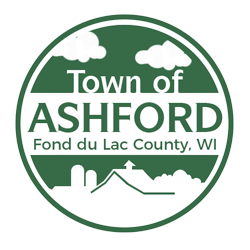By GINA DUWE
ONLINE SURVEY – To fill out the state Public Service Commission survey
on broadband Internet needs in the state, visit http://psc.wi.gov.
The survey will help officials distribute broadband grants in
Wisconsin, according to the PSC.
Rural residents limited to slow, dial-up Internet connections might
get relief through the federal stimulus package.
But first the government wants to know where those users live.
The state Public Service Commission is conducting an online survey to
find out which areas lack broadband Internet access or are
underserved.
“We would like to compile that information and map out where the
greatest need is in Wisconsin,” PSC spokesperson Teresa Smith said.
“We might have six pockets, we might have 25 pockets. That’s the point
of all of this.”
No data is available to paint a comprehensive picture of Internet
service across the state, she said. Rock County doesn’t have any data
either, said Mickey Crittenden, director of information technology for
the county.
He does know parts of the county are not served or underserved.
The PSC survey will be online until June or July, Smith said, and more
than 1,800 surveys had been completed as of last week.
The federal stimulus package allocates $7.2 billion for loans and
grants to extend broadband Internet to underserved rural areas. The
funding will be used for infrastructure, public computing centers and
data collection and mapping.
Rules and plans on how the money will be distributed still are being
decided, Smith said.
Terms of broadband
Broadband Internet is faster than a dial-up connection through a phone
line, which sometimes is the only option in rural areas.
But broadband “is a generic term that really isn’t precisely defined,”
Crittenden said. “It really denotes services that are faster than
dial-up, which can run the whole gamut.”
Crittenden, for example, sees broadband as at least a 1 megabit per
second connection speed.
“I would prefer it to be much more than that—have (that) called
high-speed rather than broadband,” he said.
Federal officials haven’t defined “broadband” yet either, Smith said.
No matter the definition, broadband connections are orders of
magnitude faster than even the fastest dial-up connection. For
example, a 1 megabyte photo would take 22 minutes to download on the
normal dial-up connection. The same photo could be downloaded in 6
seconds on a 1.5 megabit connection.
Restricting business
State Rep. Brett Davis, R-Oregon, has heard from quite a few 80th
District residents longing for better Internet access.
“A lot of people I bump into in our small, rural communities are
well-educated and want to start a business or grow, expand or work for
another company,” he said. “But they don’t necessarily have that
technology that will allow them to do that.”
He likens the issue to the highway system.
“We need this strong infrastructure of information technology to exist
everywhere,” he said. “It’s a good goal and vision.”
Reaching rural
LiteWire Internet Services of Evansville is closely following the
stimulus news and might be able to take advantage of broadband loans
or grants.
LiteWire started in 1999 with the goal of delivering Internet service
to rural customers, said Dave Mueller, co-owner and CFO.
“Our focus was to get into the country,” he said.
They’ve done that, offering wireless broadband to rural residents in
much of western Rock County and southern Dane County.
The company uses tall structures such as silos and cell towers for
antennas that wirelessly send and receive Internet to special antennas
mounted on the homes of subscribers.
“We couldn’t do it if it wasn’t for people who wanted to help us get
it done,” Mueller said.
The company plans to double the size of its coverage area this summer,
and they’ll be watching the application process for federal money.
Mueller said of the broadband stimulus money would “make things happen
a lot faster.”
INTERNET OPTIONS
Rural residents often have limited Internet service options because
big companies don’t extend service to less-populated areas. Cable and
DSL typically aren’t available.
Mickey Crittenden, director information technology in Rock County,
described the options rural residents typically choose from:
— Dial-up through a phone line. It’s slow but cheap. Monthly rates
can be $10 to $15.
— Satellite. Users receive Internet through a satellite dish.
Response time can take 1 to 2 seconds, he said, and weather can affect
the signal.
It’s not “super fast,” he said, and it can be expensive. Monthly rates
can be around $80.
— Cellular data service. Users slide a cellular data card into a
computer to connect to the Internet using a cellular connection. Cost
is $40 to $60 a month.
— Fixed wireless. Companies put equipment on tall rural structures
such as silos and cellular towers to connect with antennas placed on
subscribers’ homes. Costs start at about $40 a month.
